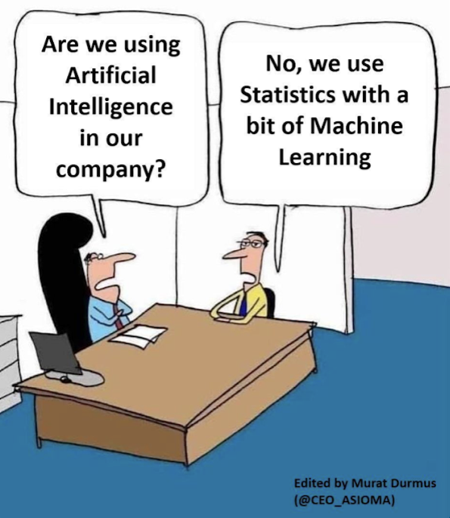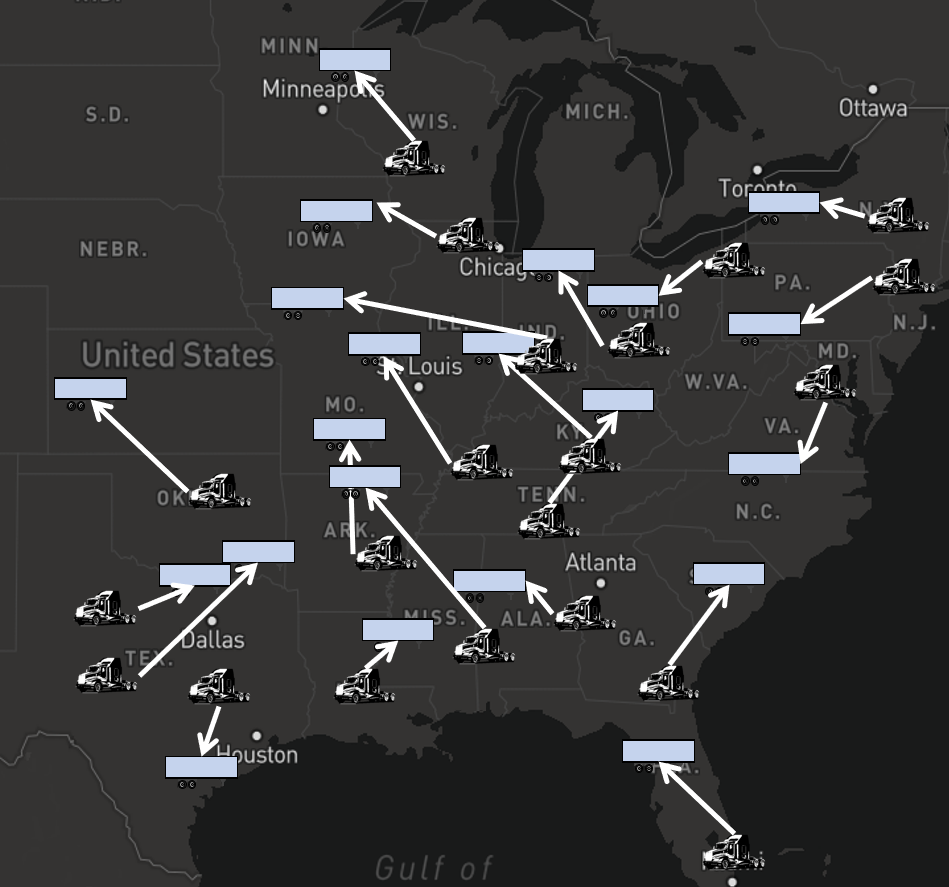Introduction to Truckload Optimization Technology
Modernizing the Supply Chain with Truckload Optimization Technology
Everyone in trucking understands “trucks”, “drivers” and “loads” because we understand what they are and what we do with them. However, there is a tremendous amount of confusion about information technology that often comes buried in terms such as “artificial intelligence,” “data science” (or “data analytics”), or just “tech.” It comes across like a lot of smoke with little information about how it is actually used to help carriers improve their operations.
Let’s start by clarifying some basic terms, beginning by explaining the difference between “data” and a host of terms that imply something more advanced.
Data

Data is information stored on the computer. Period. Data is important because it is better to have data than not have it. And we need what data we have to be accurate. Data can describe drivers, including where they are, their hours of service, and when they need to get home. Data can describe loads including when they have to be picked up, the shipper, and characteristics of the load that help us understand how important it is. Data is important, but it is not viewed as “intelligence.”
There are two styles of analytics relevant to the trucking industry:
- Machine learning, which is where we use data from history to help us estimate what might happen in the future. This is by far the most widely used form of what is often described as “artificial intelligence,”
- Decision analytics - Using computers to make decisions is a much more recent technology, especially when decisions have to be made in the presence of all the forms of uncertainty that characterize the trucking industry.
Data Science, Data Analytics, and Machine Learning
These are all terms that generally refer to using tools from machine learning (or statistics) that can be described as using the information we do know, to estimate something we don’t know. For example, might use historical bookings on loads to estimate what a shipper might do tomorrow, or further in the future. We are using history we do know, to estimate future loads that haven’t yet been called in.
We can also use past information on how long it took to load or unload a trailer at a warehouse to estimate how long it will take to load a trailer a driver is picking up, or to unload a trailer so we can estimate when the driver might be available.
Today in the business world, using machine learning to estimate something we do not know is by far the most widely used meaning for “artificial intelligence.” There are many tools available for machine learning (often for free), and thousands of people graduate each year with the skills to use these tools. These tools may produce information that helps people make decisions, but machine learning is not a technology that allows a computer to make the kinds of decisions that arise in trucking.
Decision Analytics
This is a term used to describe tools that recommend what someone should do. In other words, recommending a decision, as opposed to just helping someone with their own thought process.

Decision analytics in the trucking industry has its origins in the late 1970s and 1980s due to work that originated at Schneider National for assigning drivers to loads, as illustrated in the graphic to the right.
Load-matching systems based on this technology, primarily developed in the 1980s, are still being sold today. On the surface they sound powerful: they can optimize assignments of every driver to every load to minimize empties and maximize coverage.
These systems have been around for over 30 years, but have failed to catch hold, and the reason is that there is so much more to managing a fleet of drivers than just optimizing the assignment of each driver to one load.
It is very important to first recognize that the technologies for making decisions, such as matching drivers to loads, have absolutely nothing to do with machine learning. These are completely different sets of tools used by computers.
When vendors are developing tools that are specifically designed for making decisions, they will often say that they are using “optimization.” For decisions related to managing a fleet of trucks, it is important to divide “optimization” into two styles:
- Static optimization - This is what is happening when we take a snapshot of drivers and loads and optimize the assignment of drivers to loads without regard to what might happen in the future. This technology dates to the 1970s.
- Dynamic optimization - This is where we are not only optimizing decisions at a point in time, but we are also optimizing over time. It is not enough to do well now - we have to do well tomorrow and on into the future.
Static optimization uses mature technologies for solving what is known as deterministic optimization problems. There are standard commercial packages that work as long as you know everything in advance.
Truckload trucking is not “deterministic.” We do not know what the shippers are going to do. We don’t know whether a driver will accept an assignment or not. We don’t know exactly how long it will take to unload a trailer. But we still have to make decisions now that reflect what might happen in the future.
The technologies developed at Optimal Dynamics are building on 40 years of research at Princeton University performed by Professor Warren Powell, working extensively with many companies in freight transportation and logistics, as well as other problems. This work has produced a new set of analytical tools that fall under the umbrella of sequential decision analytics. These tools were developed specifically for the complex problems arising in trucking, and they were designed specifically to deal with the uncertainty that everyone who works in truckload trucking is familiar with.







